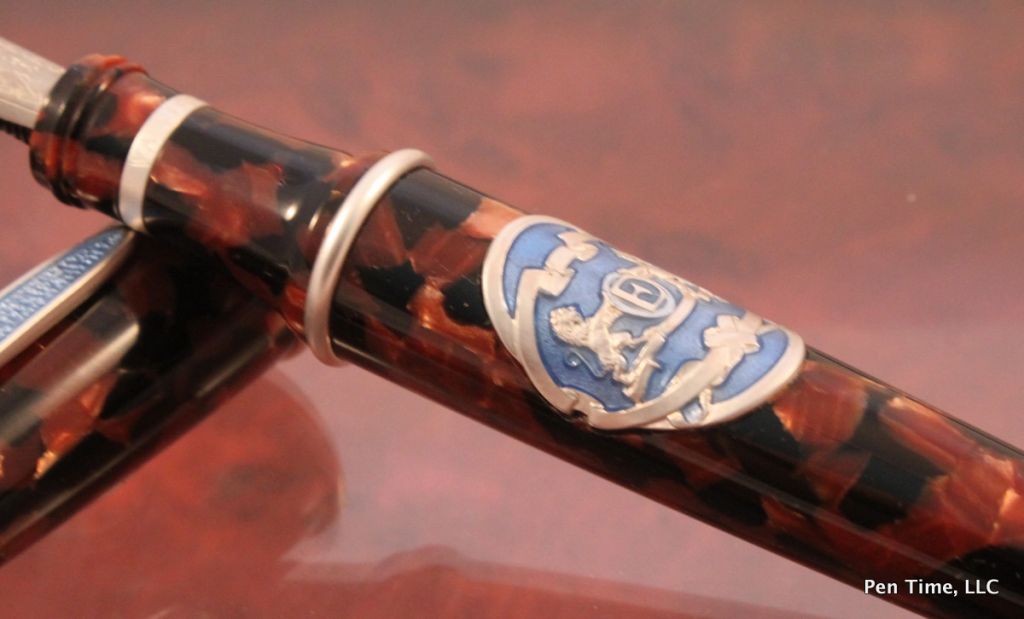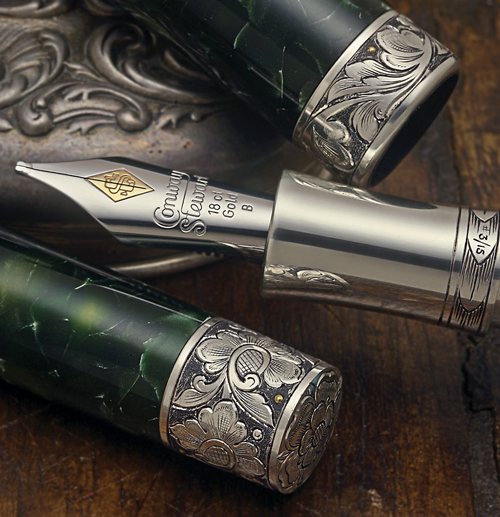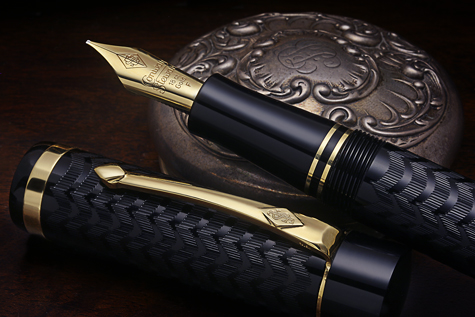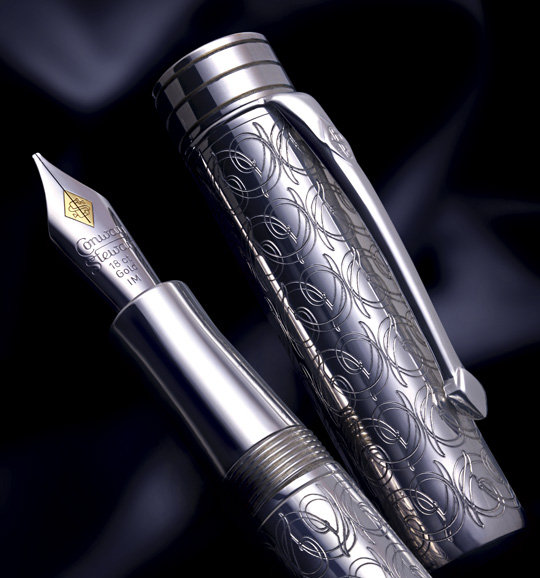The pen is made in celluloid and enameled sterling silver and uses a piston filler. It has the T-flex nib. This pen is dedicated to Bruce Chatwin’s Patagonia trip and to all those who like to travel. Bruce Chatwin was an English writer. He was writing for Sunday Times Magazine when he decided to go to Patagonia. When he arrived, he liked the place so much that he sent a telegram back to the newspaper and quit the job in order to spend six months in Patagonia.
The trip’s result was the book “In Patagonia” (1977) https://en.wikipedia.org/wiki/In_Patagonia The V on the back of the pen is the V of Voyage and the stylized book is Bruce Chatwin’s “In Patagonia” Voyage leads us into the adventurous atmospheres of the early twentieth century when trains were the most used means of transportation, the safest and gradually, the most comfortable for long hauls from one end of the European continent to the other. Inspired by the legendary Orient Express and the gently curving lines typical of Art Nouveau, Voyage takes its cue from the shape of the oval which it exalts, and from the tubular metal finishing that abounded in the train that more than any other entered the dreams of the generations before us, and that still today conserves its timeless allure unaltered. The theme of the circularity of the voyage and, ultimately, of the passing of time is also proposed in the rings at the base of the hood and on the pen knob, placed parallel just like train tracks. Even the material selected for its making was typical for the early decades of the twentieth century. Celluloid with its infinite variations of chromatic combinations and its preciousness recalls the luxurious walnut panelling in this train destined to transport elegant ladies, businessmen, diplomats, and renowned writers who precisely on the occasion of long journeys drew inspiration and wrote their literary masterpieces. How not to remember Agatha Christie, as well as Curzio Malaparte, and Marinetti the father of Futurism.





